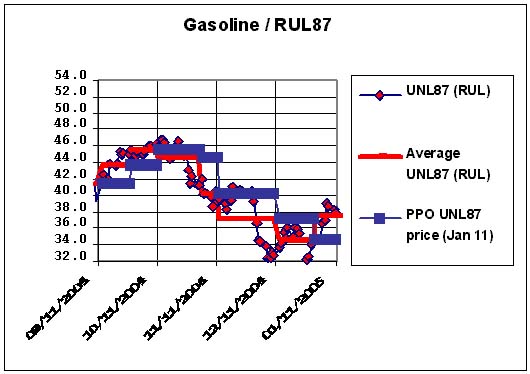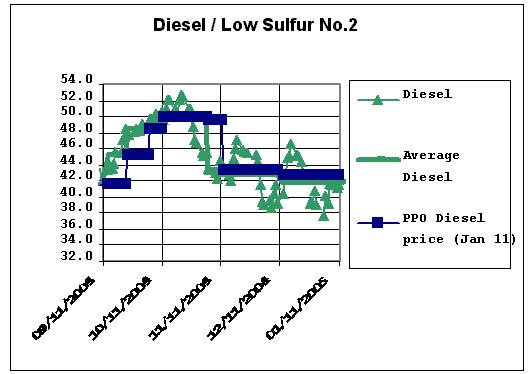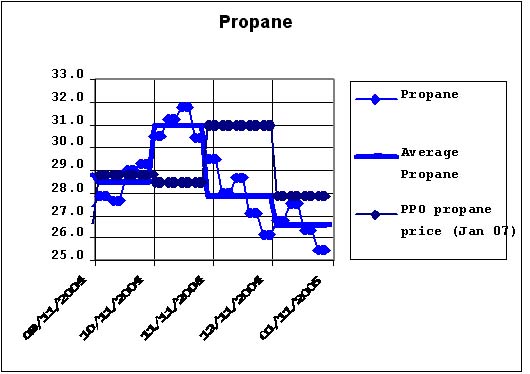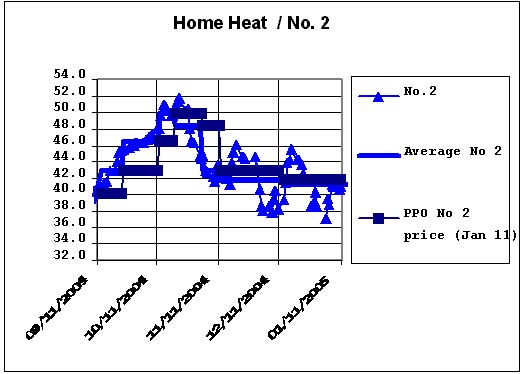|
The following is being distributed at the request of the Petroleum Pricing Office: Maximum regulated fuel prices released On January 15, the Public Utilities Board�s Petroleum Pricing Office (PPO) decreased the maximum prices for all fuels regulated in Newfoundland and Labrador, with the exception of gasoline. Effective 12:01 a.m. Saturday, the price for all types of gasoline increased by 3.3 cents per litre (cpl), but the other products saw reductions: diesel by 0.9 cpl; No. 2 blend furnace oil by 0.25 cpl; stove oil by 0.54 cpl; and residential propane by 1.4 cpl. No changes occurred in areas where a price freeze is in effect. The public is reminded that wholesalers and retailers can sell regulated products below the maximum price at any time. David Toms, PPO director (acting), said that given the market behaviour in past weeks, stakeholders should not be too surprised to see that gasoline prices, which were reduced on January 4 by 3.0 cpl because of the office�s use of the interruption formula (see backgrounder), are returning to previous levels. "The early pricing intervention in the provincial marketplace provided consumers with an opportunity to avail of these lower gasoline prices before the market rebounded," he noted. "A look at the market behaviour since the PPO interruption formula was last used shows that gasoline prices on the New York Mercantile Exchange (NYMEX) - the commodities market referred to by the PPO for pricing data - are significantly above the PPO benchmark and an increase is warranted at this time." Mr. Toms explained that numerous factors have created an unstable environment on the commodities exchange for the other fuel products regulated by the PPO (which were last adjusted December 15, 2004), but the average commodity market-price behaviour over the past 30 days has resulted in a reduction in prices for products other than gasoline to be sold in Newfoundland and Labrador. THE MARKETS Recently, factors driving the oil market include: colder weather along the north-eastern seaboard of North America; a shutdown in production at the Norwegian oilfields in the North Sea as bad weather prevented repairs to oil-loading equipment; a reduction in Iraqi southern oil exports while exports from that country�s northern oil fields were halted by sabotage; a decision by Saudi Arabia to deepen its supply cuts to key Asian customers in Japan and South Korea; an OPEC (Organization of Petroleum Exporting Countries) decision last month to cut output starting this month; as well as ongoing problems in Nigeria and the U.S. Gulf of Mexico. Consequently, NYMEX commodity prices, which experienced decreases sufficient to warrant an early interruption in PPO prices for gasoline on January 4, took a significant upward swing in recent days. Mr. Toms noted that although distillate supplies (furnace/stove oil and diesel) are still reported to be below the seasonal average range, an unusually mild winter thus far in high demand regions has helped inventories replenish. However, most of the winter season has yet to occur, and the uncertainty of being able to meet future demands remains an important factor in driving commodity prices. The price for propane used for home heating is also related to weather patterns, such as any increased demand because of cold temperatures and the status of inventories. But mild weather in the Midwest has allowed propane inventories to rebuild ahead of the typical seasonal demand, and that has helped lower the prices. "As always, stakeholders can be confident that changes to prices for all fuel products in Newfoundland and Labrador will remain based on objective reasons using formulae in accordance with legislation," he said. BACKGROUNDER PPO benchmarks are based on average prices of refined products. Illustrated in the following graphs is the market-price performance of commodities regulated by the PPO for recent pricing periods up to January 11, 2005:
The PPO interruption formula is used whenever market prices for regulated fuels meet certain criteria, provided making the early adjustment doesn�t interfere with the regular pricing schedule. For the interruption formula to be used on gasoline and distillate fuels, the PPO requires the average of market prices to be 3.5 cpl greater or less than the current PPO benchmark prices (except propane, which requires +/- 5.0 cpl) over five market business days. Media contact: Michelle Hicks, Communications, 1-866-489-8800 or (709) 489-8837. They are: 2005 01 17 10:30 a.m. |
||
|








